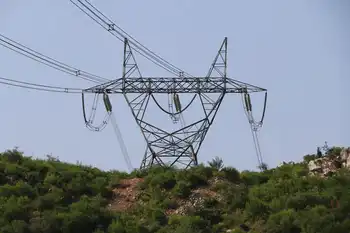Colorado Bend Energy Center starts generating electricity
By Knight Ridder Tribune
Substation Relay Protection Training
Our customized live online or in‑person group training can be delivered to your staff at your location.

- Live Online
- 12 hours Instructor-led
- Group Training Available
Once completed, the plant will have the capacity to generate 550-megawatt hours of power. Phase 2 is expected to go online in April 2008. Each phase has the capacity to generate 275-megawatt hours of power. The average home uses 1,500-kilowatt hours a month. Once completed, the plant will have 15 to 18 full-time employees. During construction, there are 150 to 225 construction workers.
Navasota Energy Partners LP, a Houston-based energy development and asset management company, which is building the plant, also has an identical plant under construction in Odessa. "We have actually been able to build duplicate plants in less than 400 days," Navasota Chief Financial Officer Dan Hudson said.
"There were a lot of experts in the industry that didn't think it could be done." The electricity produced by the plant will be distributed through the Electric Reliability Council of Texas, Hudson said. ERCOT maintains the reliability of the power grid that operates in the state of Texas.
"There is open competition in the electric industry in Texas," Hudson said. "We have an energy manager, Eagle Energy, that will handle the marketing while our company concentrates on production. We will be selling to marketing companies, wholesalers and major industrial users, among others. For example, the LCRA is one of our buyers and vice versa. When there is a peak in one location, they buy from others in the ERCOT system."
Hudson said part of the reason for phasing in the plant's production is to allow time for the grid to be updated to add its contribution to the electric needs of the state. "One of the issues we have been dealing with is the need for multiple transmission upgrades," he said.
"In the Sugar Land area, the system was not robust enough to handle our full capacity. So while we are building additional production capability, they will be building additional transmission capacity. About $30 million in improvements." Hudson said as a privately held company with investors, Navasota doesn't discuss capital costs for competitive reasons.
But in previous news releases, the company indicated the Colorado Bend plant would cost about $180 million. In addition, those previous releases stated the two Navasota plants are the only ones scheduled to come on line in Texas until 2010-2011. And as the newest plants, Hudson said, they are also the most modern both in terms of generation costs and environmental impact. As a combined cycle plant, the facility retains the initial heat of the generating process and feeds it back into the system to increase efficiency.
"The typical steam electric plant needs 12,000 to 13,000 BTU to generate one kilowatt of electricity per hour," he said.
"Our plant only needs around 7,000, making it 30 to 40 percent more efficient. We also have to meet all of the state and federal pollution control standards regarding emissions such as NOX controls for the reduction of nitrous oxide emissions." The plant is also designed to be more water efficient. The water used is pumped from three on-site water wells.
"And we cycle the water through the cooling towers between seven and eight times before discharging it," Hudson said. "And then it goes into a long ditch only two to three inches deep before eventually being fed into the Colorado River. We've had to meet all of the Army Corps of Engineers guidelines regarding the water discharges."











